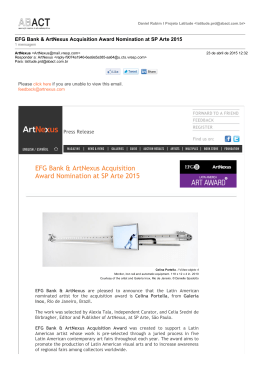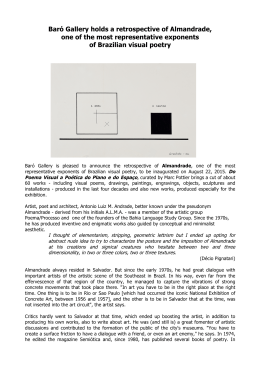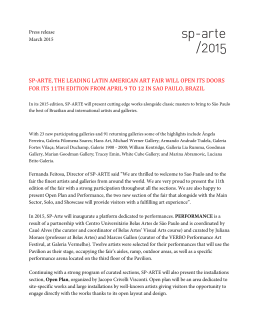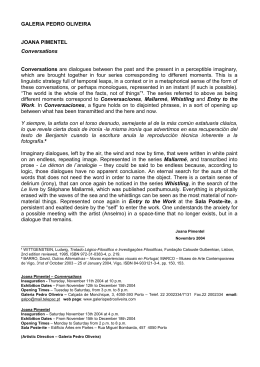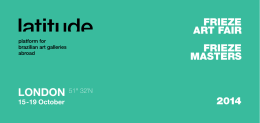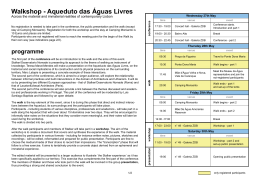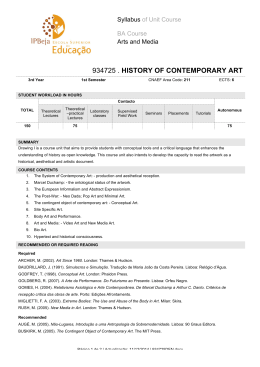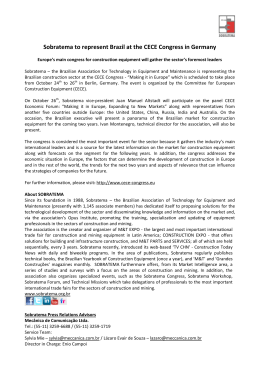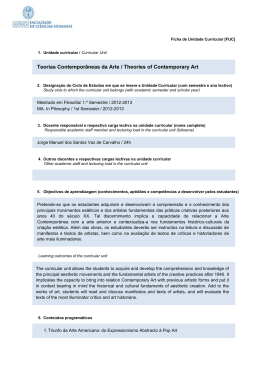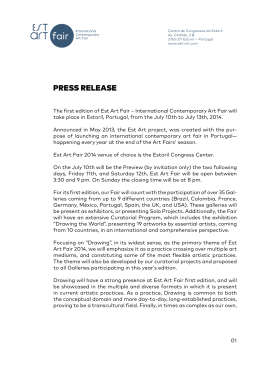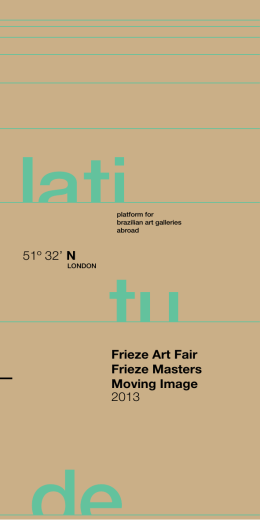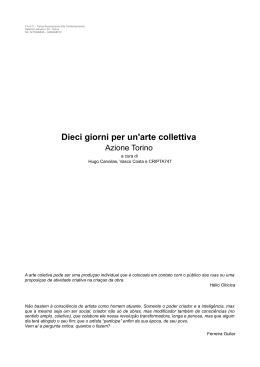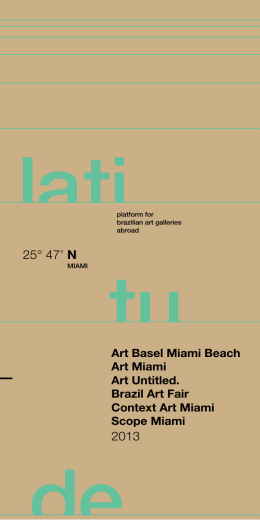Regina Pinho de Almeida’s Top 8 Works at SP-Arte Businesswoman and art collector Regina Pinho de Almeida has worked in cultural institutions, such as Sesc-SP, and has been an art consultant, art firm owner, and commercial gallery partner. She is founder and president of ICCo, which promotes international cultural exchange. REGINA PINHO DE ALMEIDA MAR 31ST, 2015 4:52 PM My collection is mainly from Latin America and Latin countries, like Portugal and Spain. One of the reasons is because of the exceedingly protective Brazilian import tax, which has shaped my collection. If I buy a work in New York and try to bring it back to Brazil, it nearly doubles in price. SP-Arte offers a special deduction for São Paulo’s buyers, so acquiring foreign works during the fair is a good opportunity. It’s very nice to see work by artists from abroad, like Rachel Whiteread, because the fair presents the easiest and cheapest way to acquire this work. I focused primarily on historical works—such as one by Brazilian artist Nelson Leirner—that have served as fundamental references for the coming generations. However, both historical and young and emerging Brazilian artists are included in my selection because they all have created strong work that would give structural power, meaning, and consistency to any collection—and should be better known abroad. Some of the works are by foreign artists, as the opportunity to have them in my collection is rare, due to the taxes I mentioned. José Rufino, Flagellum, at Central Galeria de Arte José Rufino Flagellum Central Galeria de Arte The child of Brazilian activists, José Rufino, with the approach of a paleontologist (he holds a doctorate in the field ), creates work through an archeology of his own family background. He intermingles his inheritance with a variety of mythologies, finding traces of life and humanity in the remains left by his country’s history. Eder Santos, Low Pressure Box (Revezamento 3x1), 2015, at Celma Albuquerque Galeria de Arte Eder Santos Low Pressure Box (Revezamento 3x1), 2015 Celma Albuquerque Galeria de Arte Eder Santos is perhaps the best known and most internationally successful of the current video artists in Brazil. Disturbing yet beautiful and thought-provoking, his works are mainly made up of interruptive noises that seem like technical defects and equipment malfunctions. Rochelle Costi, Série Passageiros, 2014, at Anita Schwartz Galeria de Arte ARTISTS SHOWS GALLERIES Rochelle Costi Série Passageiros, 2014 Anita Schwartz Galeria de Arte MUSEUMS FAIRS AUCTIONS POSTS LOG IN MORE SIGN UP Brazilian photographer Rochelle Costi is constantly shifting approaches and experimenting with new languages but is always wonderfully humorous. Hélio Oiticica, Metaesquema 130, 1958, at Galeria Bergamin Hélio Oiticica Metaesquema 130, 1958 Galeria Bergamin Hélio Oiticica, who is one of the most revolutionary artists of the Brazilian contemporary art scene, leads the viewer to unexpected sensory and tactile experiences in his practice. Stemming from mathematical calculation, his “Metaesquema” series (1957–58)—coined from the words for “schema” or “diagram” (esquema) and “beyond” (meta)—is based on constructivist principles, language whose structures led him later to develop his works in three dimensions. Nelson Leirner, Paletó, 1932, at Arte 57 Nelson Leirner Paletó, 1932 Arte 57 For Nelson Leirner, who helped introduce happenings to the late-’60s Brazilian scene, irreverence has been his own main driving force and the concept he bequeathed to later generations that look up to him as an unusual and inspiring teacher. Nino Cais, Untitled, 2013, at Central Galeria de Arte Nino Cais Untitled, 2013 Central Galeria de Arte Nino Cais works from the idea that the body is a magnet. He embraces the impossibility of separating memories and emotions from surroundings objects. Marcone Moreira, Expansão, 2013, at Blau Projects Marcone Moreira Expansão, 2013 Blau Projects Marcone Moreira’s work strongly references the city of Marabá in the Amazon, where he lives. The coarse materials he uses are discovered at random and include wood from boats, nylon bags, the frames of trucks, and iron doors, from which he builds refined constructive artworks. Marcel Duchamp, La boîte en valise: From or by Marcel Duchamp or Rrose Sélavy, 1941-1968, at Galerie 1900–2000 Marcel Duchamp La boîte en valise : From or by MarcelDuchamp or Rrose Sélavy, 1941-1968 Galerie 1900-2000 This work by Duchamp is the point where everything derives from. “Can one make works that are not ‘art’?” Duchamp once asked. Explore SP-Arte 2015 on Artsy. SHARE THIS ARTICLE
Download
